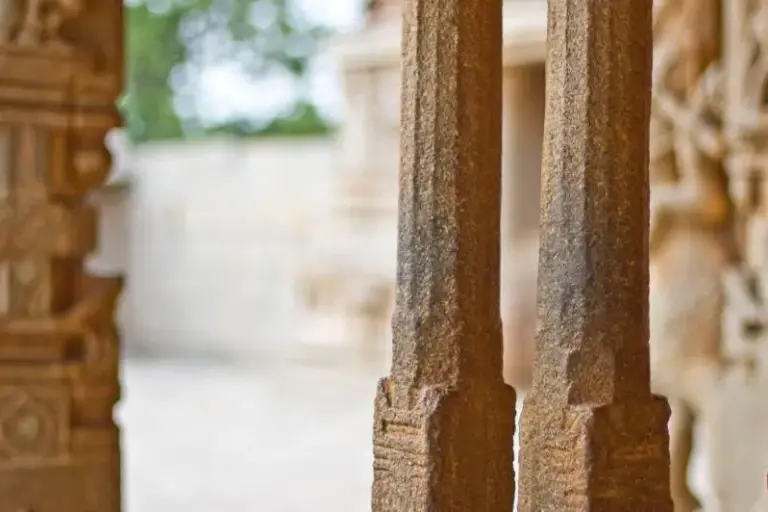The ‘SaReGaMa Pillars’, also known as the musical pillars of the Vittala Temple in Hampi, India, produce distinct musical notes when tapped.
The Vittala Temple, located in Hampi, is a masterpiece of architecture and grandeur. Words cannot fully describe the beauty of this expansive complex, which includes pavilions, halls, and other temples. However, it is most famous for its 56 mysterious pillars, each standing 3.6 meters tall, which emit subtle musical notes when struck. For centuries, tourists have visited this UNESCO World Heritage Site to experience the enchanting music of this over-500-year-old temple.

The pillars are named SaReGaMa, after the first four notes of the standard scale in Indian classical music, akin to the Western solfège Do Re Mi Fa. Together, they support the 15th-century Ranga Mantapa, the temple’s main attraction, an open pavilion likely used for music and dance. The structure includes a set of main pillars surrounded by smaller sub-pillars, with the main ones carved to resemble musical instruments. Each primary pillar is encircled by seven sub-pillars, each of which “plays” one of the seven notes of the Indian classical music scale.
But how do these pillars produce distinct sounds despite being made of the same material? Are there internal cavities within the granite that account for the different tones? In their attempt to unravel the mystery, the British cut into one of the larger and one of the smaller pillars, only to find that they were identical—solid rock!

If the pillars differed in height, weight, or diameter, it would be reasonable to attribute the varied sounds to these differences. Yet all the pillars are identical in size, yet they produce distinct notes.
The first scientific investigation into the acoustic properties of the musical pillars was conducted in 2006–07 by scientists from the Indira Gandhi Centre for Atomic Research in Kalpakkam, Tamil Nadu. Using non-invasive techniques such as low-frequency ultrasonic testing and in-situ metallography, the team studied eleven of the most famous pillars. The latter technique revealed that the microstructure of the pillars was identical to that of regular granite, while the low-frequency ultrasonic tests and impact echo tests confirmed that all the musical pillars were solid shafts.

Most of the sounds from the pillars were found to correlate with ancient Indian percussion instruments such as the Kerala mridangam, tabla, ghatam, and damaru. Other musical sounds resembled those of the veena, jaltarang, shankha, ghanta, panchtala, and saptaswara. However, no definitive explanation exists for why these identical pillars produce different tones.
The Vijaya Vittala Temple is not the only temple in India with musical pillars. Similar structures exist in the Nellaiappar Temple in Tirunelveli, where the pillars are arranged so that striking one causes the adjacent pillar to resonate, producing a bell-like sound.

Other temples incorporate musical architecture in different forms, such as staircases. For instance, at the Airavateshwara Temple in Darasuram, a set of stairs leading to the temple “plays” the seven notes of the Indian classical music scale when stepped upon.
These harmonious innovations represented a fascinating revolution in architecture during a period spanning approximately 200 years between the 14th and 16th centuries, particularly in southern India.

Today, the musical pillars of the Vijaya Vittala Temple are fenced off to prevent further damage caused by curious visitors tapping them to hear their music (it is suggested that the original pillars were made of sandalwood, as hinted by the intricate carvings in the temple). Many other temples have similarly restricted access to protect their incredible musical structures.






